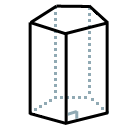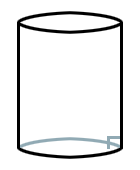Please wait while we process your payment
If you don't see it, please check your spam folder. Sometimes it can end up there.
If you don't see it, please check your spam folder. Sometimes it can end up there.
Please wait while we process your payment
Get instant, ad-free access to our grade-boosting study tools with a 7-day free trial!
Learn more



This site is protected by reCAPTCHA and the Google Privacy Policy and Terms of Service apply.
Create Account
Select Plan
Payment Info
Start 7-Day Free Trial!

Annual
2-49 accounts
$22.49/year + tax
50-99 accounts
$20.99/year + tax
Select Quantity
Price per seat
$29.99 $--.--
Subtotal
$-.--
Want 100 or more? Request a customized plan
You could save over 50%
by choosing an Annual Plan!

SAVE OVER 50%
compared to the monthly price!
| Focused-studying | ||
| PLUS Study Tools | ||
| AP® Test Prep PLUS | ||
| My PLUS Activity | ||
$22.49/month + tax
Save 25%
on 2-49 accounts
$20.99/month + tax
Save 30%
on 50-99 accounts
| Focused-studying | ||
| PLUS Study Tools | ||
| AP® Test Prep PLUS | ||
| My PLUS Activity | ||
No Fear provides access to Shakespeare for students who normally couldn’t (or wouldn’t) read his plays. It’s also a very useful tool when trying to explain Shakespeare’s wordplay!
Erika M.
I tutor high school students in a variety of subjects. Having access to the literature translations helps me to stay informed about the various assignments. Your summaries and translations are invaluable.
Kathy B.
Teaching Shakespeare to today's generation can be challenging. No Fear helps a ton with understanding the crux of the text.
Kay H.
No Fear provides access to Shakespeare for students who normally couldn’t (or wouldn’t) read his plays. It’s also a very useful tool when trying to explain Shakespeare’s wordplay!
Erika M.
I tutor high school students in a variety of subjects. Having access to the literature translations helps me to stay informed about the various assignments. Your summaries and translations are invaluable.
Kathy B.
Teaching Shakespeare to today's generation can be challenging. No Fear helps a ton with understanding the crux of the text.
Kay H.
Create Account
Select Plan
Payment Info
Start 7-Day Free Trial!
You will only be charged after the completion of the 7-day free trial.
If you cancel your account before the free trial is over, you will not be charged.
You will only be charged after the completion of the 7-day free trial. If you cancel your account before the free trial is over, you will not be charged.
Order Summary
Annual
7-day Free Trial
SparkNotes PLUS
$29.99 / year
Annual
Quantity
51
PLUS Group Discount
$29.99 $29.99 / seat
Tax
$0.00
SPARK25
-$1.25
25% Off
Total billed on Nov 7, 2024 after 7-day free trail
$29.99
Total billed
$0.00
Due Today
$0.00
Promo code
This is not a valid promo code
Card Details
By placing your order you agree to our terms of service and privacy policy.
By saving your payment information you allow SparkNotes to charge you for future payments in accordance with their terms.
Powered by stripe
Legal
Google pay.......



Please wait while we process your payment

Sorry, you must enter a valid email address
By entering an email, you agree to our privacy policy.
Please wait while we process your payment

Sorry, you must enter a valid email address
By entering an email, you agree to our privacy policy.
Please wait while we process your payment

Your PLUS subscription has expired
Please wait while we process your payment
Please wait while we process your payment

Prisms and Cylinders
A prism is a polyhedron whose faces consist of two congruent polygons lying in parallel planes and a number of parallelograms. The sides of the parallelograms are the segments that join the corresponding vertices of the two congruent polygons. These two congruent polygons are called the bases of the prism. The parallelograms are called the lateral faces of the prism. The segments that join the bases and form the sides of the lateral faces are called the lateral edges of the prism. The union of the two polygons and the parallelograms form the entire prism.
Some obvious questions come up at this point. How many lateral faces are in a
prism? The number of lateral faces is equal to the number of sides in the
bases. If the bases are quadrilaterals, for
example, then there will be four lateral faces. Why are the lateral faces
parallelograms? The reason is that the bases lie in parallel planes. The
segments joining them (the sides of the lateral faces), are parallel to each
other, and the sides of the congruent polygons are parallel to each other. A
pair of segments and a pair of sides make up the sides of the lateral faces, so
each lateral face is a parallelogram.

One special kind of prism is a right prism. In a right prism, the lateral faces are all rectangles, and the lateral edges are perpendicular to the planes that contain the bases. One example of a right prism is a cube. A cube is a six-sided polyhedron whose faces are all congruent squares. Below a right prism is drawn:

Prisms are only one member in a larger group of geometric surfaces. That
larger group is the set of cylinders. A cylinder is a surface that consists
of two congruent simple closed curves lying in
parallel planes and the segments that connect them. If these simple closed
curves were polygons, then the cylinder would be a prism. Here is a drawing of
a cylinder.

We've already talked about cylinders whose bases are polygons. Another kind of
cylinder with a special base is a circular cylinder. As you may have
already guessed, a circular cylinder is a cylinder with
circular bases. In addition to that, a right
circular cylinder is a circular cylinder whose lateral surface contains
segments that are perpendicular to the bases. A right circular cylinder is
drawn below.

Please wait while we process your payment





